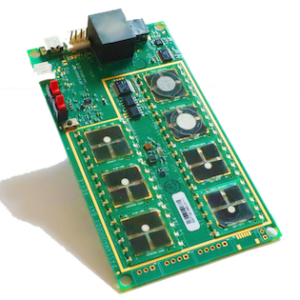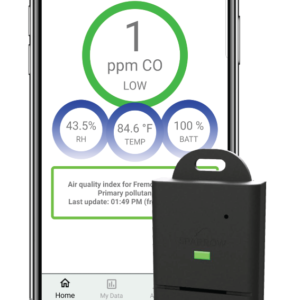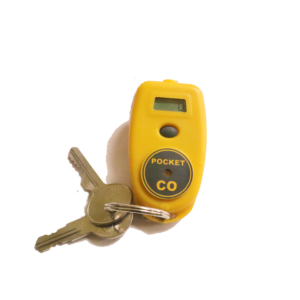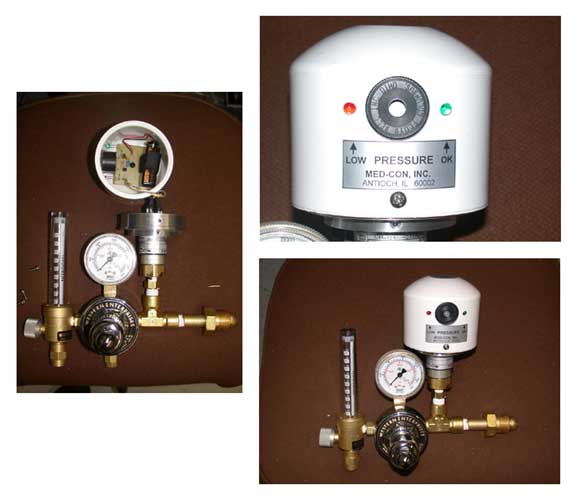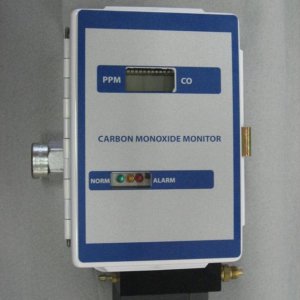By David Savastano
Printed sensors are drawing interest in the printed electronics field. There are plenty of opportunities for low-cost, thin flexible sensors to be used to monitor a wide variety of conditions.
KWJ Engineering, Inc. is among the pioneers in the field of printed sensors. A California corporation dedicated to specialized gas detection applications in the safety field, KWJ Engineering was started in 1993 by Ken Johnson, after the sale of his previous company, GasTech, to Thermo Electron in 1992.
In 2007, KWJ merged with Dr. Joseph Stetter’s company, Transducer Technology, Inc., adding the development of the next generation of nano-technology-based sensors to KWJ’s history of excellence in gas detection instrumentation. In January 2008, KWJ acquired Eco Sensors, Inc., a market leader in functional ozone detection and monitoring equipment for industrial uses. By combining these three companies, KWJ has developed an impressive portfolio of sensor technologies.
One of these promising innovations is KWJ’s Screen Printed Electrochemical Sensor (SPEC), a new generation of toxic gas sensor technology that integrates the amperometric gas sensor and printed electronics to achieve superior monitoring performance.
SPEC sensors can be fabricated in very small sizes and require only microwatts of power for operation, while meeting or exceeding the performance of conventional amperometric gas sensors. The sensors have been interfaced to wireless communications systems.
As its name indicates, SPEC is screenprinted, which offers numeorus advantages.
“The key to our technology development was combining what we know about building high performance gas sensors with what we were new to, i.e. printed electronics manufacturing techniques,” said Ed Stetter, general manager of KWJ Engineering. “This is really the element that delivers the competitive advantage. Printing technology allows us to make a high performance gas sensor tiny, flexible and near paper-thin, all at a lower cost. The gas sensor is now capable of going places where it previously was unable to go.”
Those advantages allow SPEC to fill the needs for a variety of markets, from gas sensors to more complex products, and even becoming a monitor on a cell phone.
“Initially, the sensor will appeal to existing manufacturers of carbon monoxide sensor, including residential and industrial users, and also manufacturers of wireless monitors seeking very low power sensors that can fit in a very tiny package,” Mr. Stetter said.
“Ultimately, we believe the sensors can enable new products for consumers, industry and the medical field,” Mr. Stetter continued. “Industrial users can now imagine fully integrated solutions that become a ubiquitous part of the environment or a part of the individual user. For consumers, gas monitoring is essential to our personal safety and our environmental awareness and comfort, and advanced wireless devices and cell phones will eventually incorporate these capabilities.
“While integration may begin with applications that measure toxic and harmful gases, measure alcohol on the breath or monitor air quality for comfort and efficiency (becoming part of the ‘internet of things’ or connected home), future applications can provide citywide information about air quality and even diagnose a variety of conditions and diseases through breath analysis,” Mr. Stetter added. “The phone is already becoming a hub where patients monitor their blood glucose levels and communicate other information to physicians, caretakers and loved ones. Eventually, the device will be one with the broad capability to truly save and improve your life and health.”
Mr. Stetter said making an inexpensive sensor is not that challenging, but successfully producing a really effective, low cost sensor takes expertise.
“We have really worked hard on maintaining the high performance of the sensor while using printing methods and high volume production to reduce the cost,” Mr. Stetter said. “It is not a challenge to make a cheap sensor, but it is real progress to make one that performs well. The size is somewhat of a natural result of the manufacturing methods, but in the future, we will continue to reduce the size of the sensor, making it even more approachable to device manufacturers. We can also envision very tiny sensor arrays capable of complex analysis in portable and low cost packages. These are the keys to enabling future applications.”
KWJ has received a significant amount of interest in the sensors from a broad array of potential customers and integrators.
“There is limited awareness of the many ways gas sensing can affect our daily lives, and there are many industrial and commercial applications that have yet to be realized because the enabling technology was not present,” Mr. Stetter added. “Companies are looking for sensors to provide the information essential to the future information infrastructure, sometimes called the ‘internet of things.’ Others are looking to differentiate their product with added value, and even more are interested in ways that gas sensors can diagnose illnesses and protect patients.”
Mr. Stetter said that KWJ sees great opportunities for printed sensors to become an important part of our lives.
“I think it will take some time, but printed electronics will become a part of our daily lives (where it isn’t already),” Mr. Stetter concluded. “The ability for printed technologies to really become part of our environment is exciting, and this is where the industry can possibly make its biggest impact.”
http://www.printedelectronicsnow.com/articles/2013/01/kwjengineering-finds-opportunities-with-specprinte

